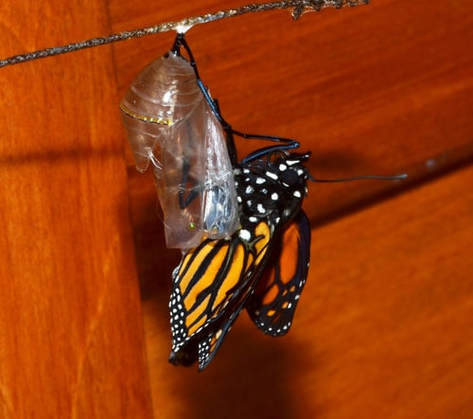|
Although the name might be deceiving, you do not have to be a professional scientist or even come from a scientific background to become a citizen scientist. Citizen scientists are vital components to understanding the decline of Monarch populations and much of what has been learned about the Monarch butterfly is the result of citizen science projects. It's quite easy to become a citizen scientist and help the vanishing Monarch butterflies. What are you interested in learning? Are you interested in tracking the Monarch migration? monitoring overwintering sites? identifying Milkweed plants? understanding Monarch health? or simply enjoying nature while counting butterflies? There are projects just like this out there! 1. Choose a ProjectFind a project that calls to you. If you are in the path of the Monarch migration or located near an overwintering site, your data is especially important. Check this list of Monarch and butterfly conservation projects to pick one suited to your area and interests. Since you already know how to identify Milkweed, you could participate in the Western Monarch Milkweed Mapper project! Even if you aren't in the path of the migration, there are still many projects out there and eButterfly is a great place to start. Monarchs are not the only Lepidoptera in trouble and you can find other projects on iNaturalist. 2. Don't forget to include the next generation of citizen scientists Get the kids involved! There are lots of fun activities that the kids can enjoy while contributing to the well-being of the Monarchs. One way to get children interested is by rearing monarchs at home or in the classroom. Learn how to rear Monarchs here. Other classroom projects include tagging monarchs, monitoring larvae, recording monarch health, and counting Milkweed plants. 3. Download a citizen science app on your phone to record resultsThere are free citizen science apps such as this and this available for you to easily track and reports spring and fall migrations. These apps allow you to report your sightings from the field while viewing maps, taking pictures and leaving comments. It is a great way to stay connected to your fellow conservationists and nature lovers! Remember, there's nothing wrong with doing it the old-fashioned way and recording your results on a notebook then inputing your data when you get home. 4. Get the community involvedHost a Bioblitz or tagging event in your community! Ask around to find a place to host such as a local park, school, community center, or public library.
A bioblitz is a citizen-science collaborative effort to find and record as many species within a specific area and in a specific time period as possible. It is a fun way to engage the public while connecting with nature and also contributing to conservation efforts. You could also host a "tag and release" event for all ages! Monarch tagging kits are available here. Partner up with local organizations to host a fun event to help the Monarchs and don't forget to invite all your friends and neighbors!
5 Comments
MARTEN BORG
2/28/2022 04:02:31 pm
First Monarch flew off today. Feb.28.2022. If all goes well, second should fly off end of the week.
Reply
Your guidance and enthusiasm have inspired me to take an active role in understanding and conserving these majestic butterflies. Your practical tips, from choosing a suitable project to involving the next generation of citizen scientists, have empowered me to contribute meaningfully to Monarch conservation. The information about citizen science apps and organizing community events is invaluable, and I'm excited to embark on this journey of knowledge and action. Thank you for emphasizing that anyone can make a difference in protecting the Monarch population, regardless of their background. Your dedication to raising awareness and involving communities is truly commendable.
Reply
9/5/2023 01:27:01 am
I love how easy it is to navigate your site.
Reply
Leave a Reply. |
AuthorRebecca Chandler Archives
March 2024
Categories |


 RSS Feed
RSS Feed